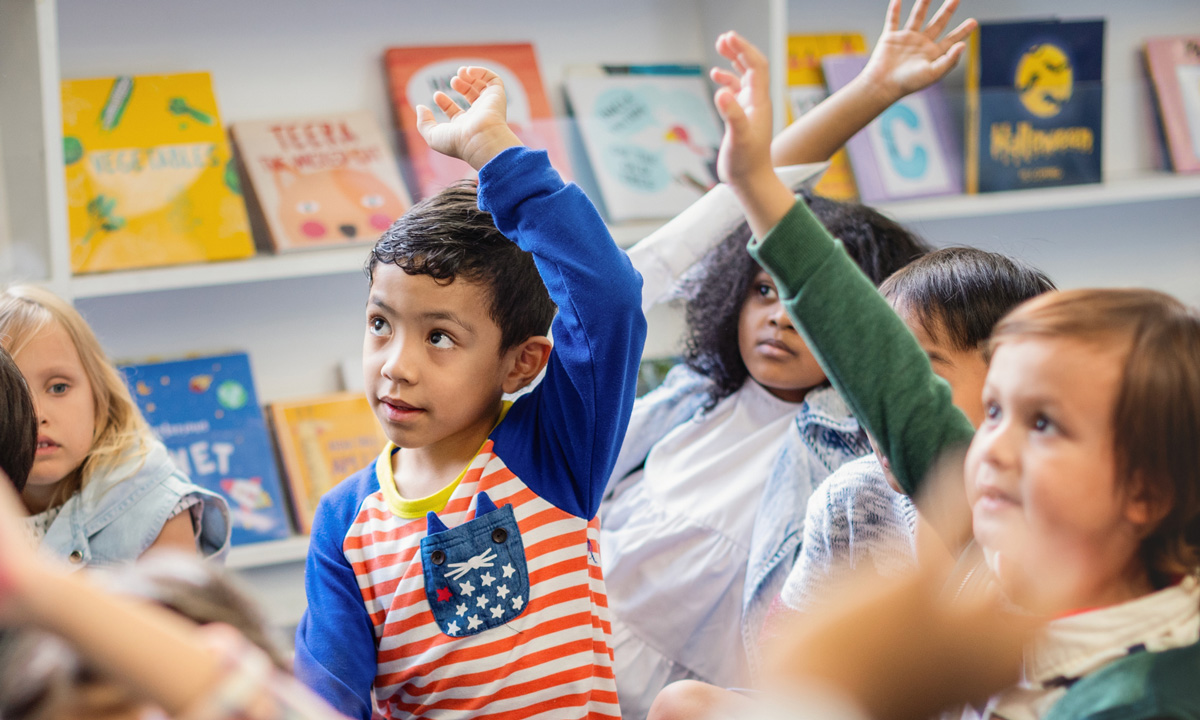Language Diversity Is an Asset. Embracing It Can Help All Learners Succeed
Goodall and Shelley: Five best practices for managing—and celebrating—cultural and linguistic diversity in ways that enhance learning.

Get stories like this delivered straight to your inbox. Sign up for The 74 Newsletter
One in 10 public school students in the United States is classified as an English learner. Yet, many educators report feeling underprepared to support language-diverse classrooms effectively.
Teaching students who speak different languages can be an exciting endeavor that more and more teachers are experiencing. Diversity is an asset, something to be embraced and encouraged. It helps broaden students’ perspectives. Listening to and learning alongside peers from various cultures allows students to feel more connected and capable of navigating the world. When educators feel prepared to teach in such classrooms, they can celebrate this diversity properly while also developing students’ English literacy skills.
Here’s some advice for how teachers can amplify diversity in ways that acknowledge students’ heritage and foster a productive learning environment for everyone.
Check your own biases
Bias is a powerful thing, and it can exist in ways we don’t even realize. The first step in effectively teaching in a language-diverse classroom is understanding and overcoming your own assumptions as an educator.
Do you believe that all children can learn, regardless of their language background, what they look like, and their socioeconomic status? Cognitive research tells us they can—and that any child can learn how to read, write, and speak in two or more languages at the same time. But sometimes, teachers find excuses not to believe that: This child’s parents don’t speak English, therefore it will be difficult for them to learn English at school. Their parents aren’t caring/giving/interested in education because they work all the time. Parents don’t read to their child therefore it will be difficult for the child to learn to read.
Being honest with yourself and checking your biases at the door is critical to ensuring every child’s success.
Honor students’ cultural diversity
Acknowledging and celebrating students’ cultural heritage creates an environment where all students feel welcome—and therefore ready to learn. That means learning how to pronounce each child’s name correctly, building a classroom library that includes books reflecting characters with similar backgrounds and interests, and knowing about their interests and individual lived experiences.
Knowing what’s important to your students and their parents can help foster deep connections. We know from learning science that serotonin and dopamine are important aspects to learning, and those chemicals are more likely to flow in a safe, secure, and welcoming learning environment.
Learn about their heritage languages
Sometimes, teachers think they have to know all of the languages their students speak to be successful. That’s not true. However, learning at least a little bit about each language can help teachers make invaluable connections for their students. And with AI, it’s now easier than ever for teachers to gain this knowledge. You can start by asking an AI engine which letters and letter sounds are the same and which are different when comparing English to a student’s heritage language.
For example, if you know that in Spanish, “ll” makes a “y” sound and “qu” is pronounced as a hard “c,” you can help native Spanish speakers overcome some common hurdles in learning to read and speak in English.
Leverage students’ skills in their heritage language
Children who have grown up learning how to speak another language have already acquired initial literacy skills that can help them learn English—and you can leverage these skills to make the process easier for them. For instance, if you know which letters and letter combinations sound the same in a student’s native language and English, this gives you a natural entry point for helping that child learn English.
Use curriculum tools that follow the science of reading
Regardless of their first language, all children learn to read and write in any language most effectively by following an evidence-based, structured literacy curriculum grounded in the science of reading.
To meet this requirement, the curriculum should begin with phonological awareness activities, followed by systematic, explicit phonics instruction that leads to decoding simple text supporting this instruction. What this means is, if you’re introducing the short “a” sound to students, you should have them practice reading decodable texts that emphasize the short “a” sound. The lessons and activities should build on students’ phonics skills in a logical progression, leading to fluency with increasingly complex texts.
At the same time, students should be developing their vocabulary and learning about syntax and semantics to extract meaning from the text. These five elements—phonological awareness, phonics, vocabulary, fluency, and comprehension—should be taught together in a structured approach to literacy.
If the curriculum you’re using doesn’t meet these criteria, then you likely need some evidence-based materials to use in your classroom, along with professional learning on implementing the science of reading into instruction. A good place to start is the Teaching Reading Sourcebook and the Online Language and Literacy Academy.
Teaching in a language-diverse classroom is an exciting prospect! By following these five strategies, educators can celebrate this diversity and create an environment where all students can learn and thrive.
Get stories like these delivered straight to your inbox. Sign up for The 74 Newsletter

;)

